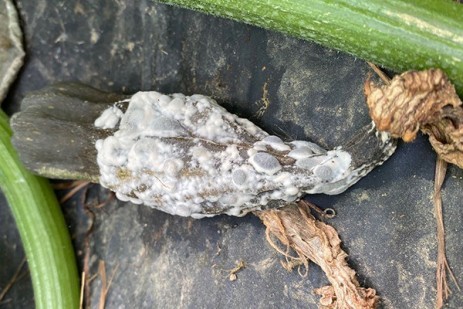Jun 11, 2020Watch for late blight on tomato, potato in Eastern region
There are currently no reports of late blight on tomato or potato in the region. Tomato and potato plants are susceptible at any point during the growing season if conditions are favorably cool and wet.
The source of the pathogen is typically potato cull piles, volunteer potatoes that were infected last season, and infected seed or transplants. Late blight can not survive in dead plant tissue or in the soil. If you suspect late blight on your farm please let me know either by email at [email protected] or by phone at 814-865-7328 or contact your local Extension Office.
In general, cucurbit downy mildew has been slower to start this year throughout the southeast which in part is attributed to the drier weather pattern that persisted in late April and throughout May. However as active fronts move up the coast, so will downy mildew which was reported on cucumber in South Carolina and North Carolina this past week. If you want to receive automatic alerts via text or email from the CDM ipmPIPE monitoring website you will need to sign-up or re sign-up if you were signed up before due to a change in the IT platform hosting the website. For emails, EDDMapS Alert will now be the subject line from [email protected].
Scout your high tunnels for Sclerotia stem and fruit rot otherwise known as timber rot on tomato and white mold on legumes. In high tunnels, we are typically concerned about timber rot, but this fungal pathogen has over 400 hosts including most vegetables. The fungus typically produces a dense white mat of fungal growth within which black sclerotia will develop as the plant tissue dies. When the sclerotia fall into the soil, they can survive for years in the absence of a host. This season high tunnel zucchini was a new host for me (see Figure 1).
Keep an eye out for onion bacterial diseases
Although the early season cold temperatures delayed crop development across much of Pennsylvania, as the temperatures heat up and severe storms move across the state, bacterial disease is likely to increase. The bacteria are easily spread between plants via rain splash and enter the plant through natural openings as well as wounds created from storm damage or thrips feeding injury.
Although frequent rain events can knock back thrips populations, it is important to maintain a regular scouting program and use insecticides such as Radiant, as needed. Thrips larvae are most commonly found in the leaf axil at the base of the plant where they are protected. Increased thrips feeding damage has been correlated to increased foliar fungal disease problems such as Stemphylium leaf blight and purple blotch in addition to bacterial diseases like center rot.
The most characteristic foliar symptom of center rot is one, or more interior leaves that become bleached and collapse. The leading edge of the lesion is often grayish-green in color and water-soaked as it moves towards the neck of the onion. Eventually, the bacteria can move into the bulb causing the associated scale to become discolored while the rest of the onion remains firm. Currently, a copper-based product tank-mixed with mancozeb is recommended for in-season management. It will protect the surface of the plant from bacteria that may be splash dispersed but will not affect any bacteria that may already be inside the plant tissue.
Figure 2. Interior bleached leaf characteristic of center rot on onion cv. Candy, left; Center rot lesion progressing down an onion leaf to the neck, right. Photo: Beth Gugino/Penn State
Stop the Rot: A USDA specialty crop initiative program
Penn State is part of a four-year project recently funded by the USDA Specialty Crop Initiative Program titled Stop the Rot. This project involves 12 states that cut across all seven onion growing regions in the United States, Pennsylvania is not the only state to have issues with onion bacterial diseases.
It is estimated that bacterial diseases account for more than $60M in losses annually to the onion bulb industry. The long-term outcomes of this project include new onion cultivars with resistance to important bacterial pathogens; reduce losses due to bacterial diseases through practical management solutions; more sustainable onion production and increased economic sustainability. We will be looking for grower cooperators throughout this project.
If you suspect you have onion bacterial disease issues or are interested in learning more about the project please contact me by email at bkgugino@psu.edu or by phone at 814-865-7328. More information to come!
– Beth K. Gugino, Penn State University
Figure 1 at top. White mycelium and sclerotia caused by Sclerotina stem and fruit rot on zucchini. Photo: Tom Butzler/Penn State
















